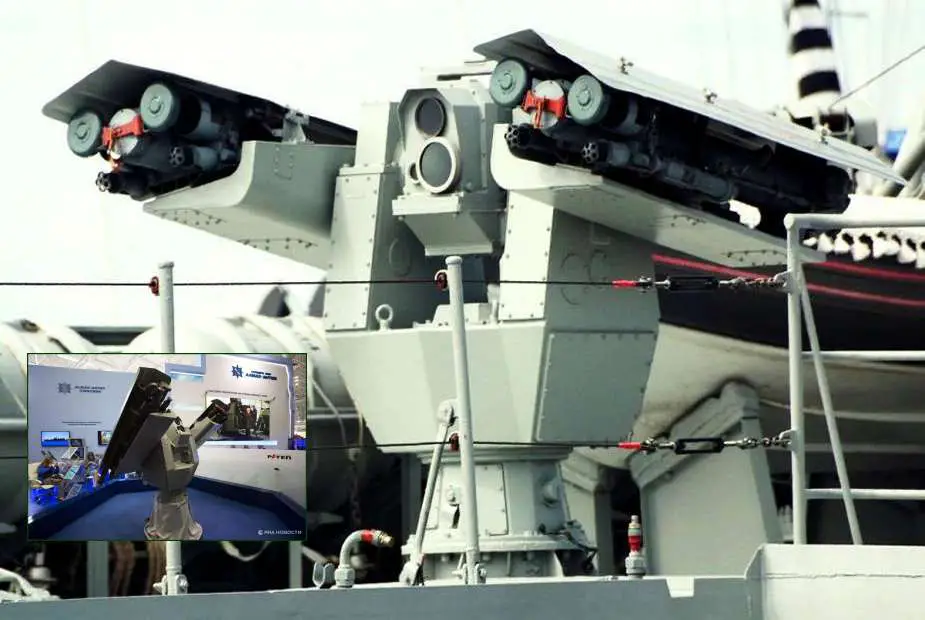Breaking news
Russia unveils upgraded Komar naval missile with enhanced aerial and surface target capabilities.
The Russian government has unveiled an upgraded version of the Komar 3M47-03E naval missile system at the Interpolitex-2023 exhibition in Moscow. According to a representative from RATEP, the system's developer and a subsidiary of the Almaz-Antey defense concern, the modernized Komar system is designed for ships that cannot carry heavier air defense systems.
Follow Navy Recognition on Google News at this link
 Russian government has unveiled an upgraded version of the Komar 3M47-03E naval missile system at the Interpolitex-2023 exhibition in Moscow (Picture source: Russian MoD)
Russian government has unveiled an upgraded version of the Komar 3M47-03E naval missile system at the Interpolitex-2023 exhibition in Moscow (Picture source: Russian MoD)
In addition to its standard Igla-S missiles, the new Komar version is armed with Ataka-guided missiles. The system is capable of engaging not only low-flying aircraft and drones but also surface targets, specifically focusing on so-called "kamikaze boats." The system can hit surface targets moving at speeds of up to 50 knots, approximately 90 kilometers per hour. This development comes as part of a broader effort to enhance the naval capabilities of Russian fleets against Ukraine, particularly in the context of emerging threats such as kamikaze boats and drones.
The Komar system's striking feature is its dual missile capability. It is armed with Igla-S anti-aircraft guided missiles for targeting aerial threats up to altitudes of six kilometers. In parallel, it also uses Ataka-guided missiles that can strike surface targets at similar distances. This multirole capability offers a comprehensive defense solution against a variety of aerial and surface threats. The upgraded complex is equipped with various types of warheads, including high-explosive fragmentation, high-explosive, and cumulative, adding another layer of versatility to its arsenal.
From a technological perspective, the revised air defense system includes optical-electronic and thermal imaging target recognition systems. These aren't merely incremental upgrades; they significantly improve the system's ability to detect and accurately track airborne objects, including drones. The system can also hit targets moving at speeds of up to 50 knots, marking it as one of the fastest systems in its category.
On the technical side, what sets the new Komar system apart is its lightweight and compact design. The launcher's mass is less than 1.5 tons, making it easily deployable on smaller boats and ships. Its reaction time is remarkably quick, clocking in at just 8 seconds, a crucial feature in critical combat scenarios. As for target detection, operators can visually detect aircraft up to a distance of 15 kilometers and anti-ship missiles up to a distance of 8 kilometers. The system also displays flexibility in its operations; it can accommodate between one and four universal launch modules, each capable of holding two missiles.
Among the system's specifications, it is noteworthy that Komar can engage targets at altitudes ranging from 0.01 to 3.5 kilometers and at distances from 0.5 to 6 kilometers. The system can intercept targets moving at speeds of up to 400 m/s and chase targets moving at speeds of up to 320 m/s. Its aiming area covers an azimuth of ±165 degrees and an elevation between -20 and +70 degrees. Despite its capabilities, the system remains incredibly lightweight with a mass of just 480 kg, making it an ideal choice for smaller naval vessels.




























